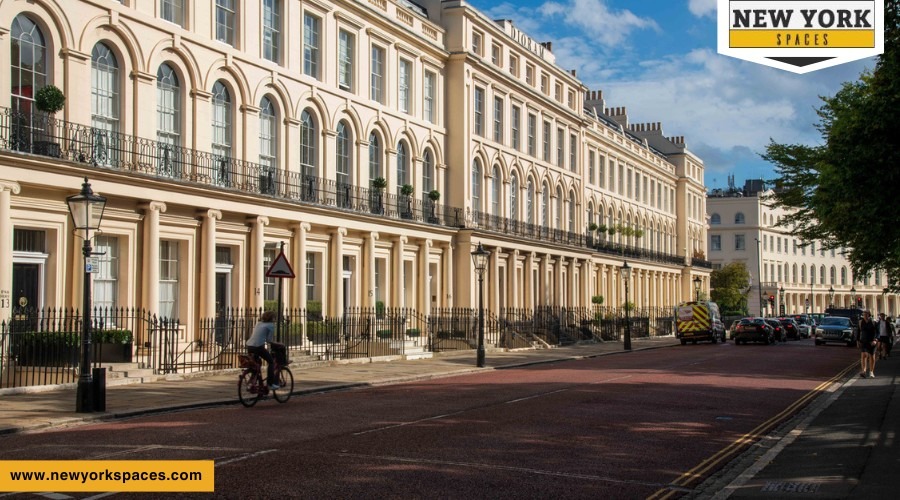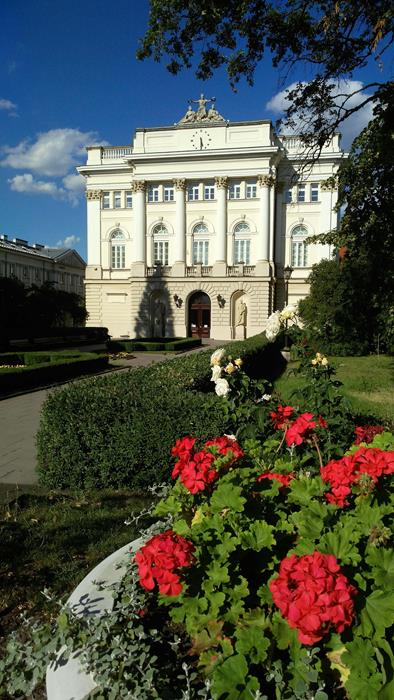Georgian architecture is like a snapshot of a stylish era from the past, where buildings were all about elegance and balance. Imagine walking down a street lined with grand houses, each symmetrical and pleasing to the eye—that’s the Georgian style for you. It’s a key puzzle piece in understanding how our buildings have evolved.
Origins and Timeframe
The term “Georgian” comes from the reigns of four British kings, all named George, who ruled one after the other. It’s a bit like naming a fashion trend after a series of popular celebrities—only these celebrities were monarchs, and the trend lasted over a century!
When Was It Exactly?
The Georgian era kicked off in 1714, when the first King George took the throne, and it stretched to 1830, closing with the end of King George IV’s reign. That’s a long time for any architectural style to stay in vogue!
Where Did It Shine?
Although we call it “Georgian,” this style wasn’t just British. It spread its elegant wings over many parts of the world, including the United States and other regions within the British Empire. Cities like Dublin, Edinburgh, and even parts of colonial America boast some stunning Georgian architecture, showing how far-reaching this style was.
Historical Context
In the Georgian era, the world was buzzing with change. Politics, society, and even the economy were shifting, setting the perfect stage for a new architectural style to take center stage. This period was marked by stability, growth, and a keen interest in classical antiquity, which heavily influenced the buildings of the time.
Stars of the Show
- Key Figures: Think of them as the celebrity architects of their day. Men like John Nash, James Gibbs, and Robert Adam were the trendsetters, transforming cities with innovative designs. They were the influencers, shaping what was in vogue in architecture.
Characteristics of Georgian Architecture
Think symmetry, balance, and order when you think of Georgian architecture. Buildings from this period were all about creating a sense of harmony and proportion, often inspired by the classic ideals of ancient Rome and Greece.
Building Blocks
- Materials: Georgian architects loved using brick and stone. These materials gave the buildings a robust and dignified look and allowed for the detailed craftsmanship this style is known for.
Blueprint of Elegance
- Designs and Floor Plans: Imagine homes with rooms arranged in a clear, logical order around a central hall. Public buildings and townhouses boasted grand facades and spacious, well-planned, functional, and beautiful interiors.
Signature Features
- Sash Windows: These tall, narrow windows slide up and down. They became hugely popular during the Georgian period for their elegance and practicality.
- Fanlights: Above the front doors of many Georgian homes, you’ll find a semi-circular window, often with decorative glazing. These looked pretty and let more light into the entrance halls.
Evolution Within the Period
The Georgian period stands as a testament to the fluidity and adaptability of architectural design, marking a journey through time that showcases the dynamic evolution of aesthetics and functionality. This era, far from being monolithic, was characterized by its responsiveness to changing tastes, technologies, and cultural influences, weaving a complex narrative of architectural innovation.
Early Georgian Period
The outset of the Georgian period was heavily influenced by the grandiosity of the Baroque and the balanced simplicity of Palladianism. Architects sought to marry the luxury of the former with the rational beauty of the latter, resulting in buildings that exuded dignity while remaining accessible. This era laid the groundwork for Georgian architecture, emphasizing clarity, symmetry, and proportion in a grand and grounded way, marking a departure from the more flamboyant Baroque towards a refined elegance.
Mid-Georgian Period
As the Georgian era progressed, architects and designers began to push the boundaries of interior and exterior design further. The Grand Tour, a rite of passage for the elite that exposed them to the cultures and histories of Europe, brought a rich diversity of influences into Georgian architecture. This period incorporated eclectic elements, from the classical grandeur of Greece and Rome to the exotic allure of Egyptian and Asian motifs. The architecture of this time reflects a global consciousness, blending domestic functionality with international sophistication.
Late Georgian Period
By the time the Georgian period drew close, the architectural landscape was ripe for transformation. The advent of the Regency style marked a shift towards more ornamental and delicate designs. This period emphasized lightness and grace, moving from early Georgian design’s more solid, masculine lines towards a refined aesthetic that valued intricacy and detail. This evolution set the stage for the Regency period, characterized by its use of color, pattern, and decoration, signaling a shift in societal values and tastes.
Influence Beyond Its Time
The story of Georgian architecture continues after the closing of the period. Its impact can be felt far beyond its original timeframe, influencing how buildings look and feel even today.
Echoes in Modern Times
- Influence on Later Styles: Georgian principles of symmetry and proportion didn’t just fade away; they found new life in later architectural movements, including the Colonial Revival and Neo-Classical styles. Its influence is like a thread woven through the fabric of architectural history, popping up in places and ways you might not expect.
- Preservation and Revival: Today, there’s a real love affair with Georgian architecture. From conservation efforts aimed at preserving historic Georgian buildings to modern homes that nod to its classic elegance, the style continues to inspire. It’s not just about looking back with nostalgia; it’s about recognizing the timeless appeal of Georgian design principles.
Conclusion
In our journey through the elegant avenues of Georgian architecture, we’ve traversed the era’s evolution from its classical-inspired beginnings, through its mid-period diversifications, to its ornate late phase, and witnessed its lasting influence on today’s architectural landscape. This architectural style, marked by its symmetry, proportion, and thoughtful use of materials, reflects its time’s societal and political ethos and continues to resonate with modern sensibilities through its enduring elegance and functional design.
With its rich legacy and adaptive reimagining in contemporary times, Georgian architecture is a testament to historical design principles’ timeless beauty and relevance. It invites us to appreciate the past, recognize its impact on the present, and inspire future generations to preserve and innovate within the rich tapestry of architectural history.


